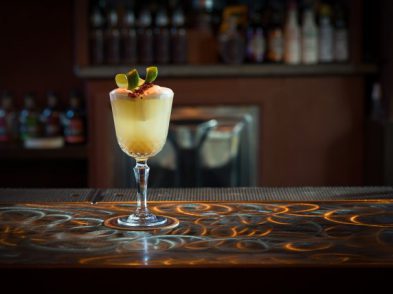Visitors come to Florence eagerly awaiting their first taste of fresh Tuscan cuisine. Visions of rich ribollita, juicy bisteccaalla fiorentina, crunchy crostini toscani and freshly made bruschetta dance through the minds of tourists and locals alike as they think of typical Tuscan fare.‘Do spelt, soy, or seitan have any place in this region known for its dense, hearty dishes?’ I wondered, fairly certain the answer would be a resounding ‘no’.
As it turns out, I was mistaken. As people all over the world become more environmentally conscious, the foods they choose reflect a growing desire to make intelligent nutritional choices. Products grown without pesticides or fertilizers and protein-rich meatsubstitutes, such as tofu (made from processed soy beans) or seitan (made fromwheat gluten) are now available in grocery stores and restaurants everywhere. In a city like Florence, where food is of utmost importance, these ‘nutritionnut’ alternatives may seem strange or unappetizing. However, exploring four different health food stores in the city center, I discovered that when it comes to alternative foods, Florentines are much more adventurous than one might expect.
The first stop on my health-food quest was Sugar Blues, a relatively large store for alimenti biologici (organic foodstuffs) located at via Serragli 57r. Originally opened in 1980, it was a pioneerof macrobiotics in Florence, together with the association Est Ovest,originally located just up the street from where Sugar Blues is still opentoday. Over the years, the store has been owned by different people, but todayit is run by Andrea Augusti and Monia Bardi. They offer a wide variety oftypical Tuscan products—from produce to cereal to wine—that are organic orprepared with alternative ingredients. Another plus is their extensiveknowledge of herbal alternative medicine and their varied supply of cleaningand cosmetic products and books. Located in San Frediano, an area where manystudents and non-Italians live, Sugar Blues has a diverse clientele.
Echoing similarhealth-conscious concepts, Ananda Samgham was the next shop on my spree. Thissmall but well-stocked store, situated at Borgo Pinti 91r, originally opened in1979 and was the first organic food store in Florence. It offers organicproduce and other products, as well as freshly-baked bread and bakery productson Tuesdays and Thursdays. In addition, the store carries natural cosmetics anda selection of herbal products and even offers home delivery.
Another natural foodstore that you’ll wish offered delivery services is NaturaSi. A chain of marketsstarted in 1992 by a group of entrepreneurs from Verona and Milan, NaturaSispecializes in organic and ecological products. It has stores all over Italy, two of which are in Florence. However, they are not located very close to thecenter. One is on viale Corsica and the other on via Masaccio. Unlike the othershops I visited, NaturaSi is owned by a large corporation and therefore is ableto offer a superb selection—it probably has the largest variety of soy milksand rice—but it lacks the personal, intimate feeling of the other stores.
Still managed by its original owners, La Raccolta is located at via Giacomo Leopardi 2r. Started in 1989 by Vincenza and Giulio, who were joined by Teresa 10 years later, LaRaccolta is unique in that it has not only a grocery store but a completelyvegetarian and organic restaurant. Founded on the ideals of respecting nature, avoiding pollution and usinglocal products, La Raccolta has a great selection of foodstuffs. One can enjoylunch in the restaurant for a decent price and take advantage of a menu thatoffers different choices every day. Check online for the daily specials. ‘Ourhealth-oriented lifestyle concept is becoming quite popular’, says ownerTeresa. ‘More and more frequently, people come into the shop with questions andconcerns about their health—particularly mothers concerned with theirchildren’s health. Many people are interested in changing their diet or tryingherbal medicine’.
In fact, Teresa was not the only one who mentioned this growing trend. While it may seem that this type of alternative eating is inconsistent with typical Tuscan cuisine, in essence it proves to be an extension of the quintessence of Tuscan cooking: fresh, healthy food that is flavorful and filling.




